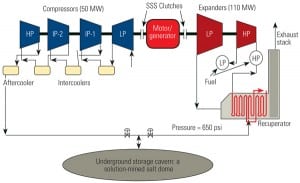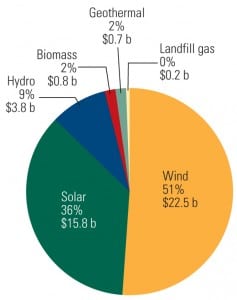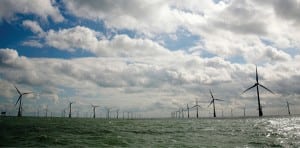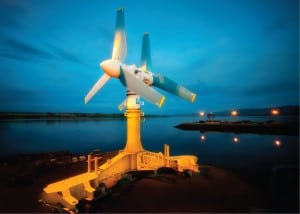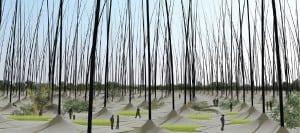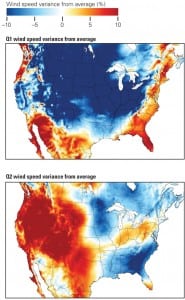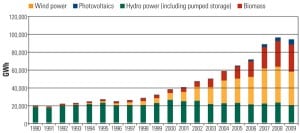Wind
-
Wind
Could CAES Answer Wind Reliability Concerns?
As wind and solar energy capacity in the U.S. continues to grow, compressed air energy storage (CAES) and other bulk energy storage technologies will increasingly be used to help balance electrical supply and demand.
-
Wind
New Design Tool Improves Manufacture of Composite Wind Turbine Blades
Composite materials are ideal for producing wind turbine blades because of their strength, light weight, and ability to be tailored to provide the precise mechanical properties needed for any blade design. Now, best practices originally developed for rotorcraft blade manufacturing can be applied to designing and manufacturing wind turbine blades that are constructed from composites.
-
Hydro
The Rush to Renewables
In 2010 investment in wind power continued to accelerate, particularly in California and Texas. California also entered several solar projects in the race for financing. The finish line that renewable power developers and their partners are racing to meet is a December 31 deadline to qualify for federal cash grants.
-
Wind
World’s Largest Offshore Wind Farm Opens in the UK
Swedish company Vattenfall in late September officially opened the 300-MW Thanet Offshore Wind Farm in southeast England. Covering an area of 35 square kilometers, the installation comprising 100 Vestas V90 turbines, each 115 meters (m) high, is the largest offshore wind farm in the world to date.
-
Solar
The Global Smart Grid Scene
Presenters at the inaugural GridWise Global Forum in Washington, D.C., September 21 to 23 had a lot to say about the prospects for smarter grids. This synopsis of facts and opinions shared at the event, which attracted several smart grid A-listers, looks at the major challenges ahead, especially for the U.S.
-
Wind
Offshore Devices Get Bigger and Lighter
UK firms unveiled two innovative offshore turbines in July and August—one to reap the wind’s energy and the other, tidal power. Wind Power Ltd. made public the latest embodiment of its Aerogenerator project, a lighter 10-MW design, while Atlantis Resources Corp. unveiled and then deployed its mammoth AK1000 tidal turbine, which it says is the […]
-
Wind
The Art of Power Generation
Much opposition to large-scale renewable projects concerns aesthetics. U.S. federal regulators, for example, ordered the developer of the $1 billion Cape Wind project—a 468-MW offshore wind farm proposed to be built in a 25-square-mile section of Nantucket Sound off the Massachusetts coast—to change the design and configuration of the project to reduce “visual impacts.” Among […]
-
Solar
What Utility Executives Think About the Smart Grid
This summary of results from a recent Platts/Capgemini survey of North American utility executives looks at what respondents had to say about all things related to the smart grid. Nearly half of respondents’ utilities have a smart grid strategy in place, while the other half said their utility has one in development.
-
Wind
U.S. Wind Speeds Bluster on Climate Phenomena
Renewable energy information services provider 3TIER in July confirmed with its publication of wind performance maps what U.S. wind developers with poor generation numbers had been suggesting earlier this year: A long-lasting El Niño event paired with a North Atlantic Oscillation event caused wind speeds to slump abnormally from the fall of 2009 through spring 2010.
-
Solar
The Feed-in Tariff Factor
Most countries are trying to increase the percentage of their electricity supply that comes from renewable sources. But because capital costs for renewable generation still, in most cases, are higher per kilowatt-hour than for fossil-fueled power, governments are looking at all options for encouraging the development of greater renewable capacity. Feed-in tariffs (FITs) are one policy tool that has been used, most notably in Europe. Now North America is testing FITs as well.

